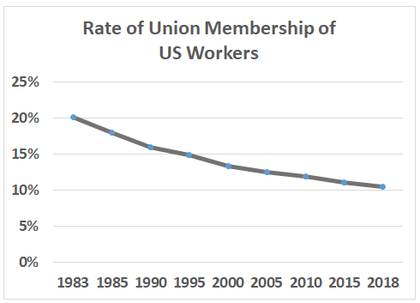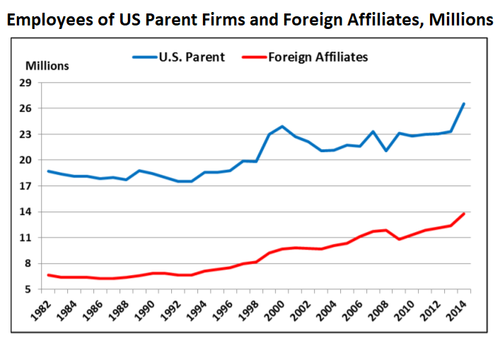Unions Kill Manufacturing? South China Morning Post
Unions Kill Manufacturing? South China Morning Post
Read the article from South China Morning Post about warnings about unions from a Chinese owner of a company that is among the largest automaobile glass manufacturers in the world.
Zhou Xin co-leads the political economy team at the South China Morning Post. He mainly covers economic stories, but also writes about Chinese politics and diplomacy.
The rate of union membership in the US manufacturing industry has declined since 1983 when such records began. US companies increased investment, sales and employment in overseas markets, which also gradually increased US employment since the late 1990s. Other industries have a higher rate of union membership than manufacturing, including government and transportation.

(Source: US Bureau of Labor Statistics)

(Source: US Direct Investment – Trends and Current Issues, US Congressional Research Service, and Department of Commerce)

(Source: US Bureau of Labor Statistics, 2018)